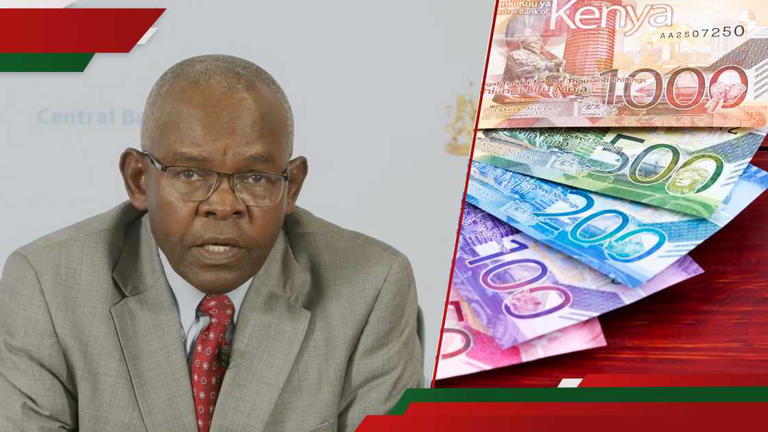Kenyan traders and importers have every reason to breathe a sigh of relief, as the Central Bank of Kenya (CBK) has confirmed that the country’s US dollar reserves are strong and stable. This assurance comes amid growing concerns in some African economies over currency depreciation and dollar shortages.
Speaking on the state of Kenya’s economy, CBK Governor Dr. Kamau Thugge announced that Kenya’s usable foreign exchange reserves stood at $11.201 billion (approximately KSh 1.45 trillion) as of July 10, 2025. These reserves are enough to cover 4.9 months of imports, exceeding the bank’s statutory target of maintaining at least four months’ worth of import cover.
“The usable foreign exchange reserves remained adequate at USD 11.201 billion as of July 10. This meets the CBK’s statutory requirement and continues to provide a strong buffer for the economy,” Dr. Thugge said.
This positive report comes after a steady increase in foreign reserves, with the figure rising from $11.089 billion reported in the last week of June 2025. The CBK attributed this improvement to several key economic drivers, including strong diaspora remittance inflows and a stable exchange rate.
The Kenyan shilling has remained fairly steady against the US dollar, trading at KSh 129.24 per dollar in the first and second weeks of July 2025. This shows a slight appreciation compared to KSh 129.29 recorded at the end of June. The stability of the shilling is a welcome development for importers, who rely on predictable exchange rates to plan business transactions and pricing.
In its latest weekly bulletin, the CBK pointed to a 13.8% year-on-year increase in diaspora remittances as a key factor supporting the foreign reserves. Kenya received $423 million (KSh 54.7 billion) in remittances in June 2025, up from $372 million (KSh 48.1 billion) in June 2024. Over the past 12 months, remittances hit $5.084 billion (KSh 656.8 billion), an increase from $4.535 billion (KSh 585.9 billion) recorded during a similar period the previous year.
“The steady growth in remittance inflows remains a key source of foreign exchange earnings and continues to support the balance of payments,” CBK said in its statement.
Diaspora remittances have consistently proven to be Kenya’s top source of foreign currency, ahead of tourism, tea, and horticulture exports. These funds, mostly coming from the United States and Europe, play a vital role in household incomes, business support, and economic development.
Geopolitical economist and market analyst Aly-Khan Satchu confirmed that Kenya’s foreign exchange position is strong and that the shilling is unlikely to depreciate in the short term.
“The Kenyan shilling is not going to depreciate soon. The dollar is weak globally, and I expect that trend to continue. This gives the shilling an advantage,” Satchu noted.
He further explained that despite new tax and tariff threats from former US President Donald Trump, the US dollar will remain the leading source of remittances into Kenya.
“The majority of diaspora funds come from the US, and that won’t change quickly. As long as Kenyans abroad keep sending money home, our reserves will remain healthy,” he added.
CBK also emphasised that maintaining a strong reserve position is part of its wider monetary strategy to protect the economy from external shocks, including fuel price hikes, food imports, and exchange rate volatility.
For now, businesses and importers can expect minimal disruption in the foreign exchange market. The assurance from CBK also boosts investor confidence, especially among those eyeing Kenya as a hub for regional operations.
The government’s commitment to maintaining macroeconomic stability, combined with growing digital remittance platforms and improved global economic conditions, is expected to sustain the positive momentum in the second half of 2025.
As Kenya keeps its dollar reserves strong and the shilling steady, attention will shift to ensuring that the broader economy remains on the growth path while avoiding overreliance on external funds.
